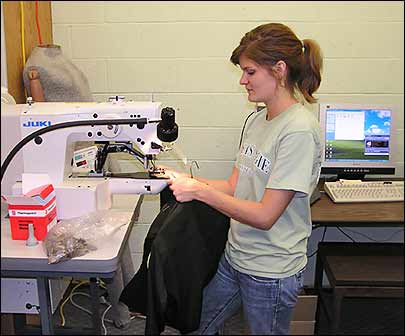Jul 21, 2005At Texas A & M University in College Station, Texas, approximately 1,700 of the 44,000 students are members of the Corps of Cadets, a group that has taught leadership and organizational management skills since the school's foundation as a military college in 1876. The cadets can easily identified on campus by their uniforms, which they rent from the university's military property warehouse (MPW). For decades, the MPW had used a manual inventory system to track the rented uniforms, but that system had become disorganized and difficult to manage, according to Colonel James Harrison, who runs the MPW. So last year, Harrison asked Madhav Pappu, a professor in the university's department of engineering technology and industrial distribution, for a better inventory system
For Pappu, this was a perfect project for the school's RFiD2 Lab, a test center that he developed and is overseeing and where he other department staff and engineering students are researching and developing RFID applications.
This summer, MPW workers are sewing passive 13.56 MHz tags into 14,000 individual garments, including pants, skirts, shirts and jackets, that will make up the three sets of uniforms assigned to each of the more than 600 incoming freshman joining the Corps of Cadets this fall. This is the first step in an RFID-based rental and inventory system that Pappu designed.
Pappu chose to use Ario 70-TL passive HF 13.56 MHz read-write tags manufactured by French RFID systems provider Tagsys, which has a U.S. office in Doylestown, Pa. The circular tags are small, just 22mm in diameter, and have a 230mm read range and 64 bits of memory. They are encased in plastic and can withstand water and extreme temperature ranges, which are important because the garments are dry-cleaned. The tags are designed for textile applications and, due to their round shape, are unlikely to push through a sewn seam after years of wear and cleaning (tags with sharp corners often do).
Pappu selected the Feig Electronic MR-100 13.56 MHz interrogator, or reader, for the application after testing it as well as similar interrogators from Escort Memory Systems and Tagsys. "The Feig reader worked with tags from the greatest range of manufacturers and is also much less expensive than the others we tested," says Pappu. The other readers he tested were the EMS LRP820-08 and the Tagsys Medio L100. Pappu says he was quoted approximately $3,600 and approximately $4,200 for the EMS and Tagsys readers, respectively. These prices include antennas and cables.
[Note: Both the EMS LRP820-08 and the Tagsys Medio L100 are designed for industrial applications, while the Feig reader is designed for retail and non-industrial applications. EMS declined to confirm the pricing Pappu was quoted, saying prices are based on a variety of factors, such as volume. The Tagsys distributor with whom Pappu worked says the Medio L100 sells for $2690 with an antenna. He sells a 12-inch $700 antenna for the Medio L100 and a larger one for $900. He could not confirm the quote of $4200.]
According to Pappu, he paid approximately $700 for the Feig reader (with antenna and cables), and plans to purchase two more of the readers as well as two handheld Feig readers. He paid approximately $700 for the Feig reader, and plans to purchase two more of the readers, as well as two handheld Feig readers.
Rather than buy an off-the-shelf warehouse management system, Pappu used MySQL to write the RFID application's software platform, which he named Omnino2.
The new recruits, currently on campus for early cadet meetings, are being measured for their uniforms. Once the garments for each student are fitted, they are collected into kits, one for each student, that includes both rented items, such as pants and jackets, and purchased items, such as socks and uniform accessories.
MPW workers are then take these kits and sew the tags into each of the rented garments. Once sewn in, each tag is encoded with a kit ID number. That ID number is recorded in Omnino2 database and associated with the garment's manufacturer's name, its size, the year and price of purchase and the name of the student to whom the kit will be issued.
When the cadets return to campus late next month, they will pick up their uniform kit. When each kit is handed over to its cadet, an MPW employee associates the kit's ID number, found in the inventory based on the student's name, with the student's ID number. At that time the program transfers each garment within the assigned kit from the MPW inventory category to the cadet's ID, thereby checking it out of inventory.
The significant difference between the new rental and inventory system and the new one are in how the uniforms are associated with the students renting them.
In the old system, the MPW workers would write down the type, size, and ID number of each garment, as well as the name and ID of the student to whom it was being issued.
In the new system, this information is all saved in the Omnino2 database, and additional information, such as the garment's manufacturer and its date and price of purchase is recorded as well. The MPW worker selects all of this information from drop-down menus, as well, which saves time over the manual system and should result in fewer mistakes. By tracking the manufacturer's information, date of purchase and price, the MPW can also better manage its quality control. For instance, if the zippers or buttons from a single order tend to fail unusually quickly after purchase, the MPW can pinpoint a manufacturing fault.
"This new system is ensuring a more accurate inventory over the previous system, and it saves us time" says Pappu. In the long run, this time savings and the ability to keep better track of the inventory could save the MPW money, as well.


